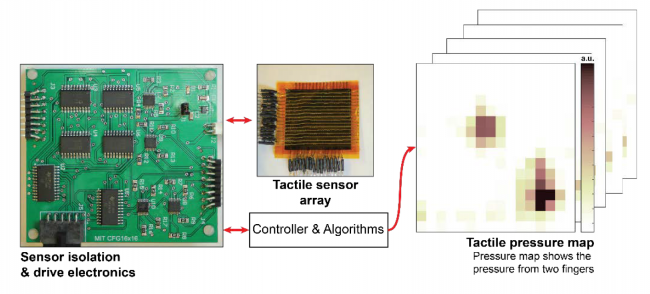
Humans grasp diverse objects while applying the right amount of force. However, modern robots function without the dense tactile feedback that living organisms are used to. In that sense, modern robots are tactile blind. The main goal of this proposal is to investigate a series of fabrication techniques and associated electronics and algorithms to enable dense tactile sensing for a variety of applications, but specifically in robotics manipulation and control. The tactile sensing techniques we outline here will not only enable sensory feedback for robots, but also help us understand the primate grasp and the dexterity it enables. The large density tactile sensor we propose can be used on curved surfaces with arbitrary geometry and fabricated rapidly using inexpensive materials. The collected sensor datasets (with more than 1000 elements) will have broad potential for use as training data for machine learning networks to learn diverse grasps and robot tasks.
[January-1-2018 to current]
Publications:
-
S. Sundaram, P. Kellnhofer, Y. Li, J.-Y. Zhu, A. Torralba, and W. Matusik, “Learning the signatures of the human grasp using a scalable tactile glove,” Nature, vol. 569, no. 7758, pp. 698–702, May 2019 [Online]. Available: https://doi.org/10.1038/s41586-019-1234-z


